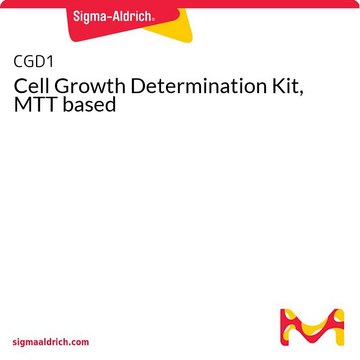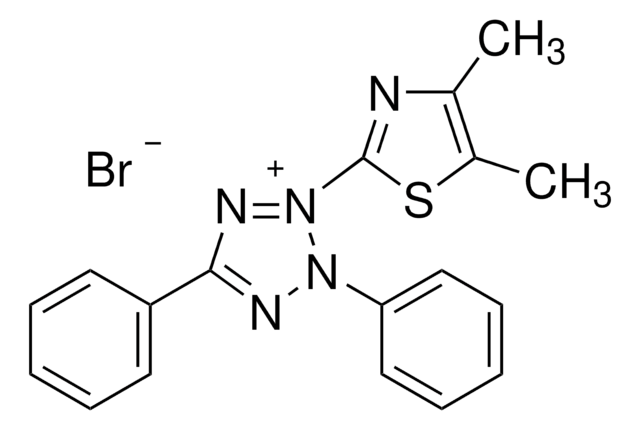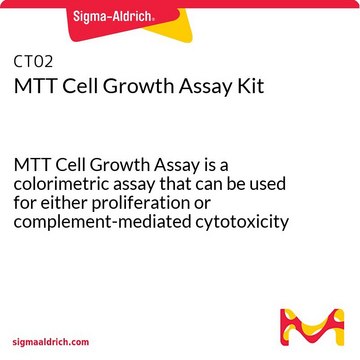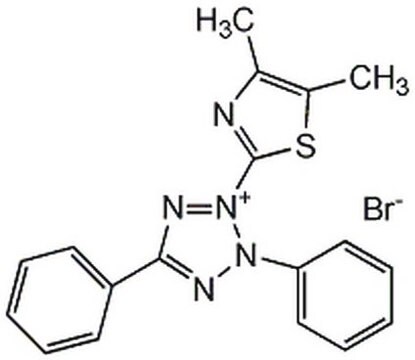TOX1
In Vitro Toxicology Assay Kit, MTT based
Synonyme(s) :
mitochondrial activity assay
About This Item
Produits recommandés
Utilisation
kit sufficient for 1,000 tests
Niveau de qualité
Conditionnement
pkg of 1 kit
Conditions de stockage
dry at room temperature
λmax
570 nm
Application(s)
cell analysis
detection
Méthode de détection
colorimetric
Température de stockage
2-8°C
Description générale
Application
Actions biochimiques/physiologiques
Produit(s) apparenté(s)
Mention d'avertissement
Danger
Mentions de danger
Classification des risques
Aquatic Acute 1 - Aquatic Chronic 2 - Eye Dam. 1 - Flam. Liq. 2 - Muta. 2 - Skin Corr. 1 - STOT SE 3
Organes cibles
Central nervous system, Respiratory system
Code de la classe de stockage
3 - Flammable liquids
Point d'éclair (°F)
53.6 °F
Point d'éclair (°C)
12 °C
Certificats d'analyse (COA)
Recherchez un Certificats d'analyse (COA) en saisissant le numéro de lot du produit. Les numéros de lot figurent sur l'étiquette du produit après les mots "Lot" ou "Batch".
Déjà en possession de ce produit ?
Retrouvez la documentation relative aux produits que vous avez récemment achetés dans la Bibliothèque de documents.
Les clients ont également consulté
Articles
Cell based assays for cell proliferation (BrdU, MTT, WST1), cell viability and cytotoxicity experiments for applications in cancer, neuroscience and stem cell research.
Notre équipe de scientifiques dispose d'une expérience dans tous les secteurs de la recherche, notamment en sciences de la vie, science des matériaux, synthèse chimique, chromatographie, analyse et dans de nombreux autres domaines..
Contacter notre Service technique














